The cruiser "Varyag". Fight Chemulpo 27 January 1904 of the Year. CH 19. After battle
first - this is the loss of the Japanese. An analysis of the currently existing documents shows that the Japanese in a battle with Varyag and Koreans did not suffer any casualties, the author himself adheres to this point of view. However, there is some evidence to the contrary.
So, a certain journalist McKenzie, author of the book From Tokyo to Tiflis: Uncensored letters from the war. London: Hurst an Blackett, 1905, who was personally present at Chemulpo during the 27 battle of January 1904, writes:
The first fact - Shortly after seven o'clock in the morning after the battle, I was walking along the main street of Chemulpo, when I met the doctor of the Japanese Diplomatic Mission in Seoul, going to the railway station. I knew him well, and when we went together, he told me that he had come to inspect the wounded. But officially, the Japanese did not suffer casualties while the Russians were cared for on foreign ships.
The second fact. A few weeks after the battle, my enthusiastic friend, who has close official ties with Japan, described to me cases of heroism of people during the war. “For example,” he said, I recently came to see the mother of one of our sailors, who was killed during the battle of Chemulpo. She dressed in the best outfit to accept me, and considered my condolences as congratulations on the happy event, as it was a triumph for her: her son had to die for the emperor at the beginning of the war.
"But," I said in amazement, "there must be some kind of mistake. After all, according to official data, no sailor was killed in that battle." “Ah,” my friend replied. "This is so. On the warships there were no dead, but some Russian shells hit the Japanese ships nearby in order to follow the Varyag movement. The sailor, whose mother I visited, was on board one of them, and was killed there. "
Frankly, all of the above utterly strange. You can somehow try to suggest that the Japanese invited the doctors even before the start of the battle, so to speak, “in reserve” and he didn’t actually examine any injured. But the explanations of a friend of a foreign journalist are more than unsatisfactory - no ships or boats from which the Japanese would watch Varyag and who could be at least theoretically hit by 27 January 1904 Russian shells did not exist in nature. Some Japanese boats could be on the Chemulpo road, but there the Varyag did not shoot.
Second. As we know, no Japanese destroyer “Varyag” drowned, and moreover, judging by the “Battle Report” of the commander of the destroyers Sakurai Kitimaru of the 14 squadron, all three 27 ships of this class participated in the 1904 battle in January. held on to the flagship cruiser "Naniwa" and did not even try to go into a torpedo attack. However, there are two inconsistencies that categorically do not fit into this version.
The first of these: according to the “Combat Report” to Kitimaru, during the 27 battle of January 1904, its destroyers followed “Naniwa”: “Tidori”, “Hayabusa”, “Manadzuru”, being at the stern exchange rates from the non-firing board "Naniwa" at a distance of 500-600 m, went a parallel course, waiting for the right moment to attack. " However, if we look at the diagram presented in “Description of military operations at sea in 37-38. Meiji (in 1904-1905), then we are surprised to find that the Japanese destroyers do not follow the Naniwa-Niitaka pair, but rather the Takachiho-Akashi pair. But then the question arises - what route did the Japanese destroyers actually go to?
And here is the second: if we take the diary of one of the eyewitnesses of those distant events: the midshipman of the American gunboat "Vicksburg" Leri R. Brooks, then we will read the following:
It should be noted that no friendly relations of this midshipman with Russian officers, which could encourage L. R. Brooks on a lie in nature did not exist. And it’s hard to imagine that a person in a personal, non-public diary would lie. Who is there to deceive himself?
The only thing that comes to mind is that some Japanese ships made a maneuver, which from afar could look like a miner attack. But, if so, then, perhaps, on the Varyag could they be considered the same? But maybe the attempt to go on the attack did indeed take place?
The fact is that if we assume that the authors of the schemes of the book “Description of military operations at sea in 37-38. Meiji (in 1904-1905) was nevertheless mistaken, and the commander who directly supervised the destroyers in battle was right, then it must be admitted that the prerequisites for a mine attack still formed when Varyag left 12.15 for Fr. Phalmido (Yodolmi), while Naniwa, Niitaka approached this island from the other side. At this moment, three Japanese destroyers had the opportunity to give "full speed ahead", and, being "in the shadow" of Fr. Phalmido (Yodolmi), suddenly at full speed jump out because of him and attack the Russian ships.
The route of the destroyers according to the scheme is highlighted in red, the route of the destroyers is shown in blue if they followed Nanivoy. The possible route of the destroyer attack is shown with a red dotted arrow.
In other words, in the circumstances, the attempt at a mine attack looks quite reasonable: at the same time both the Russians and the American midshipman observed such an attempt, but the Japanese categorically deny its presence.
And finally, the third. We carefully studied the maneuvering of the Varyag and the Koreans, and a little less detail about the movement of the Japanese ships, despite the fact that their courses after 12.15 were not described by us at all. Such an approach has the right to life, because on the whole, the maneuvering of Japanese cruisers looks quite rational - with the start of the battle, they moved towards the eastern channel, blocking the "Varyag" the most obvious route of breakthrough, and then, in general, acted according to circumstances, and went straight on the "Varyag" during his hitch at o.Phalmido (Yodolmi). Then "Varyag" retreated, again placing sharply between themselves and their pursuers, but for Fr. Yodolmi on the fairway leading to the Chemulpo raid, only the Asama followed the Russian ships. However, approaching the island, "Asama" produced a strange circulation, including the Japanese
The route of the “Assam” and its circulation are highlighted in red.
Obviously, for the pursuit of "Varyag" such a circulation is not needed, but Yashiro Rokuro does not give any reasons explaining it. Actually, a record approximately corresponding in time to this turn in the “Combat Report” of the commander of “Asama” reads:
“Asama” turned straight to “Varyag” and went to Fr. Phalmido (Yodolmi) was at the latest in 12.41 (12.06) and moved directly to the enemy before the circulation itself. After the circulation was completed, he also followed the Russian ships. Thus, it turns out that the signal-order from the “Naniwa” could only be raised during the circulation of the “Assam”: they noticed on the flagship that the “Assam” was turning somewhere, somewhere not there, and ordered to resume the pursuit of the enemy. Consequently, this circulation is not at all the result of some order of Sotokichi Uriu. But then what caused her?
The author suggested that perhaps the commander of the Asama, seeing that the Russian ships approached the border of the territorial waters (and at about the time they were about there), considered it necessary to stop the pursuit. Recall that the battle began precisely when the Varyag approached the border of the water bridge, and the Japanese, opening fire, could assume that the Russian cruiser had already left them. And now, when they returned there, Yashiro Rokuro could find that pursuing them there was a move. However, this is a very dubious explanation, since in this case “Asama” should not have turned back, but ceased firing - nevertheless, there is no evidence that “Asama” stopped shooting during circulation. And, if “Asama” really ceased firing, then on “Naniwa” they would have raised an order to resume shooting, rather than “Harass”.
The second option is that the Russian ships "hid" behind the island during the approach of the Japanese cruiser and the "Assam", bypassing the island, found them too close to him, and therefore chose to break the distance, it also looks at least strange. Why did the Asame have to shy away from the Russian ships, and at the same time changing the shooting board during circulation? Somehow it does not look like the Japanese.
And finally, the third option - a malfunction of the control, or getting combat damage, as a result of which Asama was forced to break the distance. It looks the most logical, but, as we know, “Asama” during the battle had no damage and did not receive damage.
It must be said that such a point of view was also expressed (V. Kataev) that "Asama" made a circulation, passing the destroyer that approached the island to attack "Varyag". But, with all due respect to the distinguished author, such an explanation is no good. Armored cruisers do not lay circulations in order to give way to the destroyers, and despite the relative narrowness of the navigable canal in the region of Fr. Phalmido (Yodolmi), "Asama" there could easily cross each other with the destroyer, even with "Mikasa" Kheikhatiro Togo without any circulations. And how can it be that the armored cruiser going on 15 nodes has a place to turn, and the destroyer does not have to go past him?
Thus, we can only say one thing: having done a lot of work with the documents and materials available to us about the Varyag and Koreans fighting with the superior forces of S. Uriu’s squadron, we still can’t dot the i's. One can only hope that sometime in the future some more “Top Secret Protocols to the“ Top Secret War at Sea ”” will emerge from the depths of the Japanese archives, which will give answers to the questions we are interested in. In general, as the character of one entertaining book said: “I envy my descendants - they will learn so much interesting things!”. Well, we will return to the Varyag - after either in 13.35 (13.00), or in 13.50 (13.15) the padded cruiser anchored on Chemulpo in the immediate vicinity of the British cruiser Talbot.
The French and English cruisers sent the boats with the doctors almost immediately, as soon as the Varyag anchored. In total, three doctors arrived: two Englishmen, including T. Austin from the Talbot and his colleague Keenie from the nearby British steamer Ajax, and E. Prizhan from the Pascal. The French cruiser commander V. Sanes arrived at the French boat (Sene?) Different sources give different transcriptions). The Americans also sent their doctor, but his help on the cruiser was not accepted. Generally speaking, the actions of the commander of the cannon "Vicksburg" and his relationship with VF Rudnevs deserve a separate material, but this is irrelevant to the topic of our cycle, therefore we will not describe it.
In order to understand the further actions of Vsevolod Fedorovich Rudnev, it should be borne in mind that the Varyag commander had to act under time pressure. We know that Sotokichi Uriu did not dare to fulfill his ultimatum and did not go to Chemulpo’s raid in 16.35 (16.00), as promised, but the commander of the Varyag, of course, could not know about it. What is equally important - when making a decision to evacuate the crew, one should have taken into account the decision of the foreign stationary commanders to leave before 16.35 (16.00), taken so that their ships would not suffer during a possible Japanese attack.
In other words, on everything about everything Vsevolod Fedorovich had less than three hours.
Shortly after Varyag anchored (after 20 or 35 minutes, depending on how long the anchorage time was right), V.F. Rudnev leaves the cruiser. Record in the ship's logbook reads:
Negotiations did not take much time. The following entry in the magazine "Variag":
It is not entirely clear when the first boats to evacuate the crew went to the Russian cruiser — it seems that they were sent to the Varyag before Vsevolod Fyodorovich announced his decision to evacuate the ship. Perhaps a semaphore was given from “Talbot” to “Pascal” and “Elba”? This is not known to the author of this article, but this is what we can say for sure - no delay was allowed. Nevertheless, and despite the fact that “Varyag” was anchored in the immediate vicinity of foreign stationary staff, the evacuation process was delayed.
Recall that the doctors started their work at 14.05 (13.30) - and, despite the fact that they provided only first aid, they finished it at 16.20 (15.45), and without examining all the wounded, only most received "more or less serious injuries." That is, in fact, just preparing the injured for transportation (and dragging them along the ladders and lifeboats even without first aid would be completely wrong), despite the fact that it was carried out with the help of foreign doctors who started work as soon as possible, dragged on almost until the end of the time of the ultimatum S. Uriu.
True, the Varyag logbook provides slightly different information:
However, the 15-minute difference in the memories of the British doctor T. Austin and the records of the cruiser’s logbook is quite easy to “reconcile” with each other - for example, V.F. Rudnev could have gone on the last cruise round, having ordered the last wounded to be taken away (by that time, obviously, who were on the upper deck of the Varyag) and not to see when the last boats with the crew had fallen off.
And that was all. In 18.45 (18 hours 10 minutes Russian time)
As for the gunner "Koreyets", then it was so with her. Once in 14.25 (13.50) vf Rudnev announced his decision to destroy the cruiser, without making another attempt to break through, and midshipman Balk was sent to the Koreets. In 14.50 (14.15), he boarded the Korey and announced the decision to destroy the Varyag, and bring the team to foreign stationary.
A military council was held at 15.55 (15.20), at which it was decided to destroy the “Koreyets” due to the fact that in the roadstead a canlodka would have been shot by the enemy with distances unattainable for her guns. Apparently, someone suggested the option to leave for the island of So-Wolmi (Fr. Observatory) to try to fight from there: it was about a small island located not far from a fairly large island. Rose, between him and the exit of the raid. However, this idea could not be realized at low tide - depths did not allow.
In 16.40 (16.05), two explosions, which took place at intervals of 2-3 seconds, destroyed the gunner Korean.
What do we usually like to blame Vsevolod Fyodorovich in our actions and decisions after the battle? The first is the haste with which he made the decision to destroy the Varyag. Well, of course - only the ship was anchored, the officers had not yet completed the inspection of the cruiser, and Vsevolod Fyodorovich had already single-handedly decided everything and further put his decision into action.
But in fact, in V.F. Rudnev had more than enough time to assess the combat capability of the Varyag. For some reason, the critics of the commander of the cruiser Varyag believe that it is possible to proceed to the examination of his condition only after the ship anchors on Chemulpo raid, and this was absolutely not the case. As we know, vf Rudnev after 12.15 retreated for Fr. Phalmido (Yodolmi) in order to assess the degree of damage to his ship, and, of course, received with some information about the problems. Then the Varyag retreated to the Chemulpo raid, and the fire on it was stopped at 12.40: after that nothing could interfere with the collection of information about the damage to the ship. As we know, vf Rudnev, went to the "Talbot" in 13.35, that is, from the time of the cease-fire by the Japanese and before leaving for the British cruiser, Vsevolod Fedorovich had almost an hour to figure out the state of "Varyag". During this time it was impossible, of course, to penetrate into all the nuances of the damage received, but, of course, it was possible to assess the condition of the ship and the degree of drop in combat capability.
As for Vsevolod Fyodorovich’s departure before the completion of the cruiser survey, it’s worth remembering the famous Pareto rule: “90% of the result is achieved 10% of effort, but the remaining 10% of the result has to be applied the remaining 90% of effort”. Inspection of the ship meets certain requirements and must be completely complete - at the same time, what was already known was enough to understand that it no longer makes sense to bring the ship back into battle - the ability to cause damage to the enemy was obviously exhausted.
The second thing that Vsevolod Fyodorovich is accused of today is that he just flooded the ship and did not blow it up. V.F. Rudnev gave the following explanation in the report to the Marine Department Manager:
However, our revisionists found these reasons unsatisfactory: “Korean” was blown up, and nothing terrible happened, so no problems, in their opinion, with “Varyag” would have arisen. Maybe it, of course, is true, but there are a number of nuances that do not allow equating “Korean” and “Varyag” between themselves.
It is already difficult to determine the exact location of Russian ships relative to foreign ones, but by comparing the photographs of the explosion of the Korean from the Vicksburg.
and from "Pascal"
with a photo of "Varyag" on the anchorage,
We can quite reasonably assume that “Varyag” was much closer to foreign stationary students than “Koreyets”. It was impossible to put “Varyag” on arrival at the raid - it would have complicated the evacuation of the wounded and the crew, and, as we remember, foreigners were going to leave the raid before 16.35 (16.00). It should be remembered that the "Varyag" did not have its own boats, and he could not evacuate the crew on his own. Of course, the boats were on the Koreans, but, firstly, there were few of them, and secondly, with their help, it was necessary to evacuate the crew of a gunboat.
In other words, in order to blow up a cruiser, it was necessary after the evacuation of his crew to take him away from the parking lot of foreign ships, or to insist that they themselves move closer to 16.35 (16.00). But at the same time agree with the commanders, so that they sent the boats to evacuate the subversive party.
Today it is easy for us to argue - we know when the crew’s transportation to foreign stationary facilities actually ended, but Vsevolod Fedorovich couldn’t know for sure. The cruiser did not have special devices to load the wounded to the boats, which made their evacuation one more task. They were passed from hand to hand to the crew lined up in a chain, helping those who could move on their own go and descend, and it all worked out rather slowly. This was also because the transportation of the wounded was only to be followed after at least first aid was given to them, five doctors worked tirelessly, but things were still moving slowly.
Put yourself in the place of VF Rudneva. He is "on hand" badly damaged cruiser and many wounded. Own means of evacuation there, and proceed to the destruction of the "Varyag" must be no later than 16.35 (16.00). Of course, you should not blow up a cruiser in the immediate vicinity of the Talbot. But if the cruiser is taken away from the Talbot now - the evacuation will be delayed. If you first evacuate the wounded, and then try to lead the cruiser, then there may not be enough time, and the Japanese may appear on the raid - and on the cruiser only the party of "hunters", which should ensure its explosion. So you can give the Japanese ship at all. To ask the foreigners themselves to leave their parking places to 16.35 (16.00), reminding that this was exactly what they were going to do if Varyag did not enter the battle with S. Uriu's squadron? And if it’s still impossible to evacuate all the wounded before that time, then what? Blow up the cruiser with them?
It is today we know that the Japanese did not go on a raid after 16.35 (16.00), but in V.F. Rudnev was not the slightest reason to assume such. His decision to sink rather than blow up a cruiser is dictated by the need to cope before the deadline on the one hand, and the need to be as close as possible to foreign hospitals for timely evacuation - on the other.
It should be noted that the submersion of the cruiser, although it did not destroy it completely, was guaranteed not to allow it to be raised until the end of the war. That is, the Japanese obviously could not use it in the course of hostilities, and then ...
Do not forget that the "Varangian" was flooded in the raid of a neutral power. And on January 27, 1904, when the hostilities had just begun, it was by no means impossible to assume the crushing defeat that the Russian Empire would undergo in this war. But even in the event of a tie, nothing subsequently would prevent the Russians from raising the cruiser and reintroducing it into the Russian Imperial fleet... By the way, this should not have been done with the “Korean” - due to its small size, it would have been much easier to raise it than a cruiser of the 1st rank over 6 tons in weight, which was the “Varyag”.
Thus, an alternative emerged before Vsevolod Fedorovich Rudnev - he could, at risk for the wounded, crew members, and even with certain chances for the Japanese to seize the Varyag, to blow up the cruiser, or, avoiding the said risks, to submerge it. The choice was neither simple nor obvious. Vsevolod Fedorovich chose the flooding, and this solution had a number of advantages. As we know, it was not optimal, and VF would have been better. Rudnev blow up "Varyag" - but we argue from the position after the knowledge, which Vsevolod Fedorovich did not have and could not have. Based on the information available to VF Rudnev at the time of the decision, his choice in favor of flooding is fully justified, and there can be no talk of any "betrayals" or "gifts of" Varyag "Mikado".
Especially absurd in this regard is the view that the Japanese Order of the Rising Sun, II degree, which VF Rudnev was awarded after the war, was awarded to him because Vsevolod Fedorovich "presented" his cruiser to the Japanese. The fact is that in Japan itself at that time the Bushido code was still cultivated, from the point of view of which such a “gift” would be regarded as a black betrayal. Traitors, of course, can pay the agreed “30 of Srebrenics”, but now reward them with the Second Order of the Empire (the first was the Order of the Chrysanthemum, and the Order of Pavlonia was not a separate award at that time - the Order of the Rising Sun moved to third place) no one, of course, would not. After all, if they were awarded a traitor, then how did the other gentlemen of this order react to this? It would be a mortal insult for them, and they are taken very seriously in Japan.
Продолжение следует ...
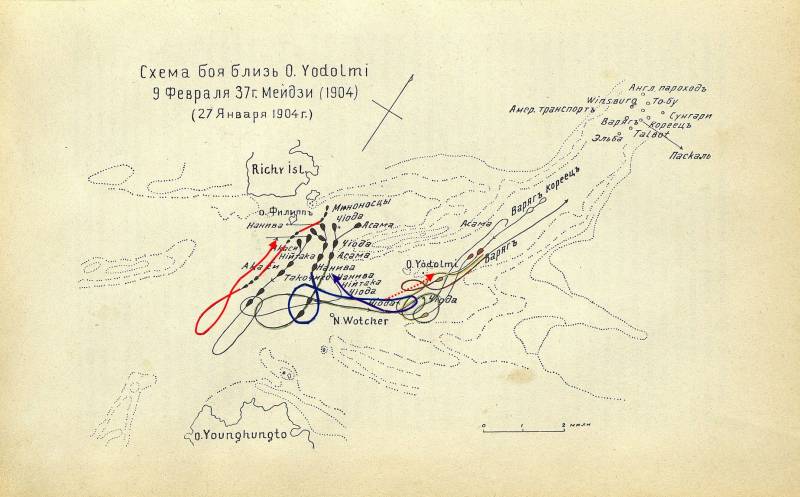
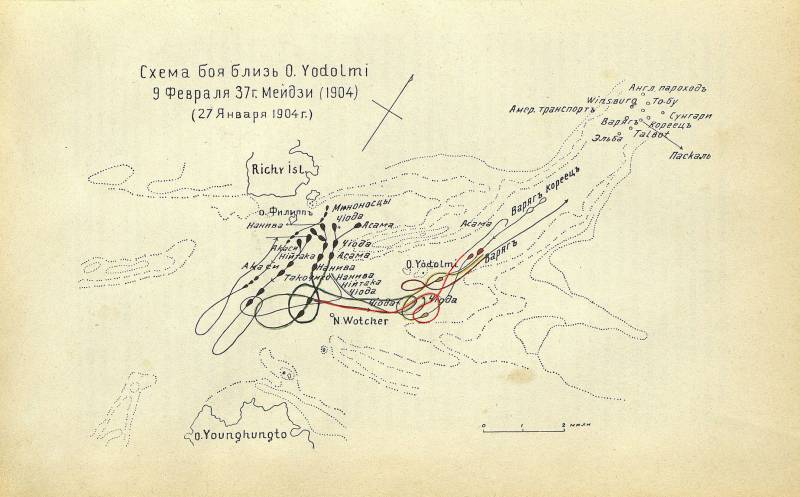
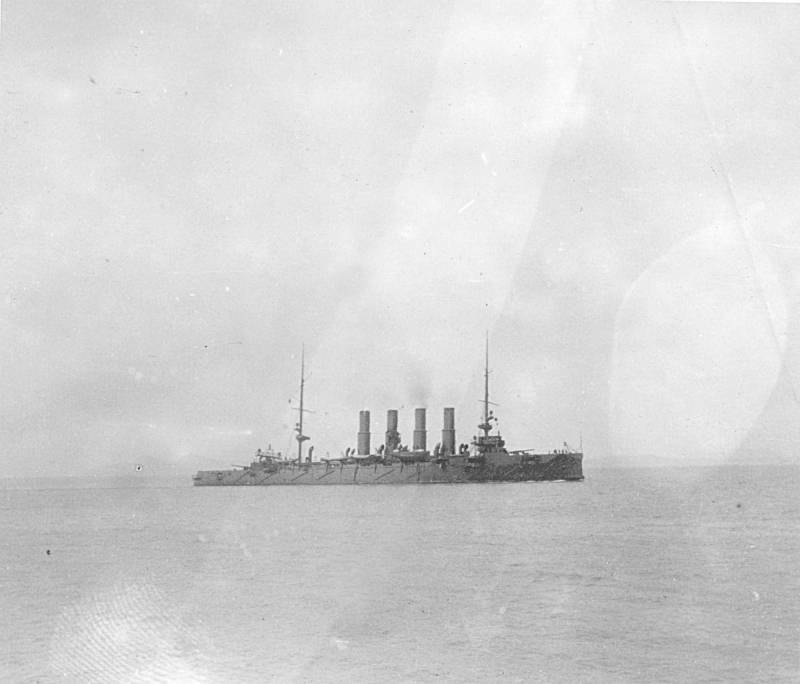
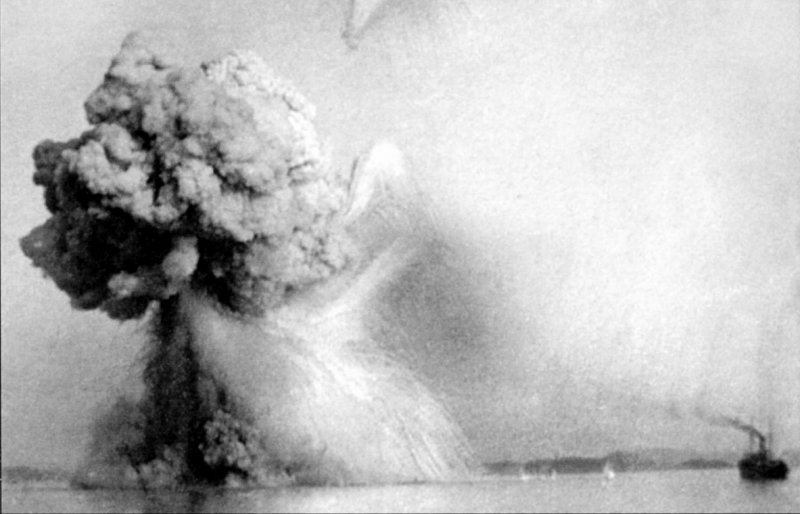
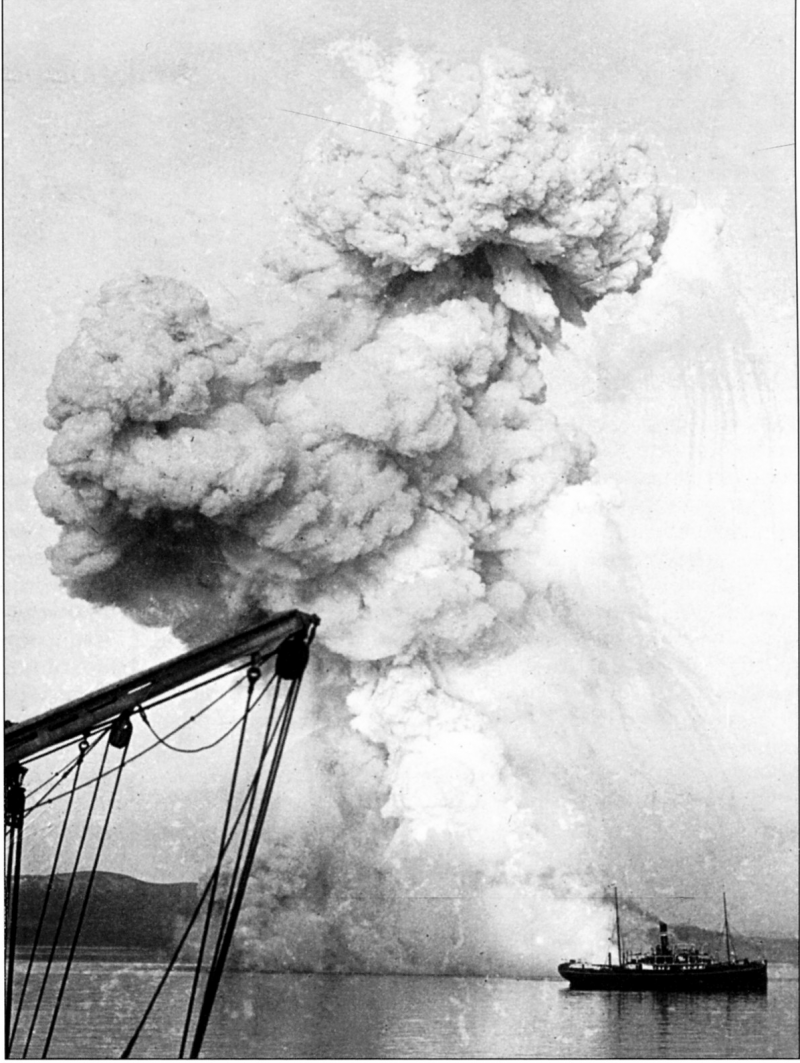
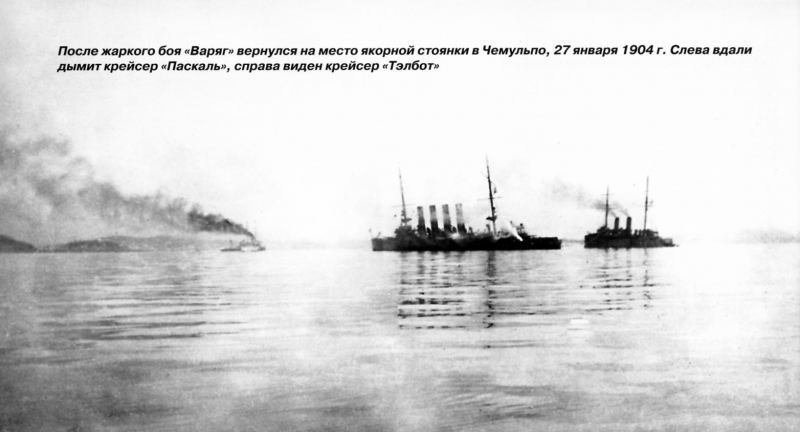
Information